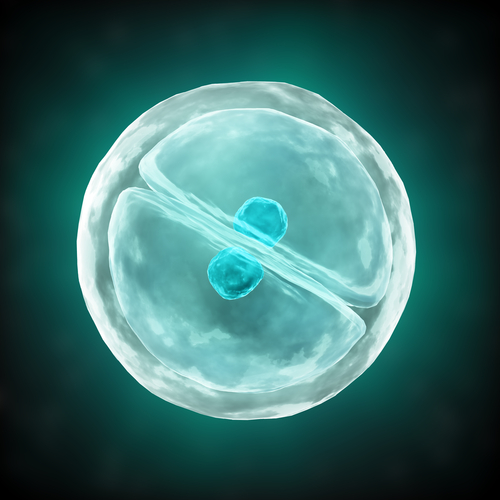Stem Cell Therapy in Cystic Fibrosis & Chronic Lung Disease: Past Present & Future

My last four articles have highlighted various stem cell types and their potential therapeutic application for those with cystic fibrosis (CF). However, the next logical question to ask is how exactly does cell therapy work? Stem cell therapy in CF is a hot topic for discussion, so I find it important to highlight some of the past research, and how current research is aimed to overcome hurdles.
It is no surprise that the ability to use stem cells to replace the defective CF cells in the lung would be a tremendous breakthrough. Fortunately, the cells would not need to regain 100% CFTR function within the lung. In fact, one study found that as a little as 8% CFTR function was necessary to sustain healthy lung function. Since it would be unlikely to have a completely successful stem cell procedure, scientists and engineers could also produce a CFTR protein that over-expresses its ability to transport Cl– into the airway. Also, since stem cells are capable of self-renewal and differentiation into functional cell types, cell therapy has the potential for long-term restoration of CFTR function.
The unfortunate reality, however, is that stem cell therapy is not currently available for patients with cystic fibrosis. Many studies starting around 2003 found that it was very difficult to engraft stem cells within the human lung. Engraftment is when the new stem cells start to grow and assimilate into healthy tissue. One study found that 0.025% engraftment occurred in the lung while another found that only 0.5% engraftment occurred 3 months after stem cell therapy. This level of engraftment is too low to have therapeutic value. Other confounding variables like the stem cell type and the pathology of the lung influence the likelihood of successful therapy. CF animal models do not fully mimic the situation found in the diseased human lung, since the CF lung in lab animals does not spontaneously manifest inflammation, infection, and chronic remodeling. Therefore, work must be done to find an animal model that can better model the CF lung’s environment and pathology. On a positive note, several researchers have found that a more injured lung tissue is better at engrafting stem cells than uninjured lung tissue, but this still is not a direct translation into the outcome of CF lungs.
The last challenge of cell therapy is related to past articles on the specific characteristics of each type of stem cell. Immune rejection of stem cells is always a concern and ideally, the need for immunosuppressive treatments should be avoided. The ideal stem cell would come directly from the lung itself, expanded in vivo, and corrected for the defective CFTR gene. We currently have not shown that these steps are feasible, despite how unregulated clinics claim to have found success with stem cell transplant. It is not yet clear if the methods to accomplish this life-changing procedure are yet discovered, but scientists across the world are searching for a greater understanding of lung cells and their role in regeneration. Current research has shed light upon the hurdles of stem cell research, so it is only a matter of time before we find a way to overcome them, and allow stem cells to regenerate lung cells that have a working CFTR protein.







